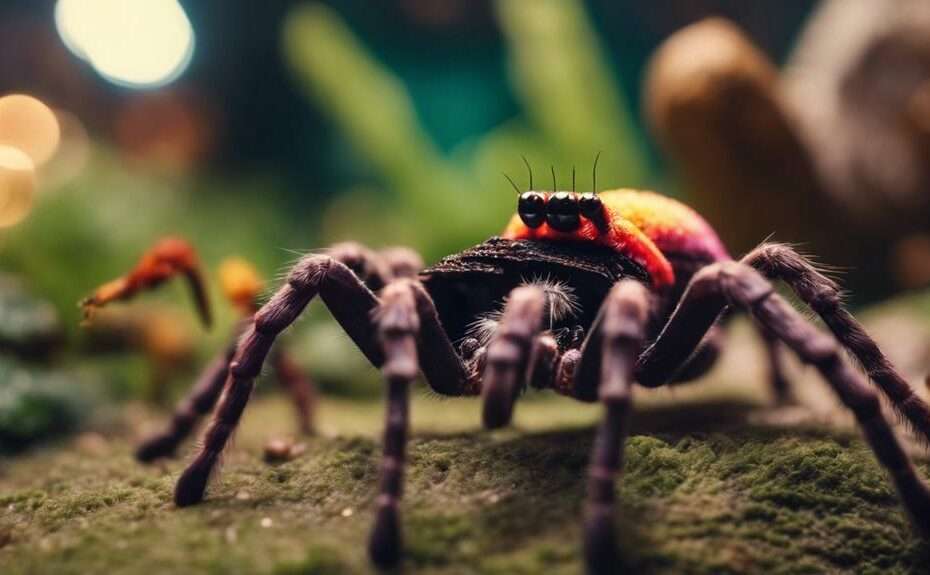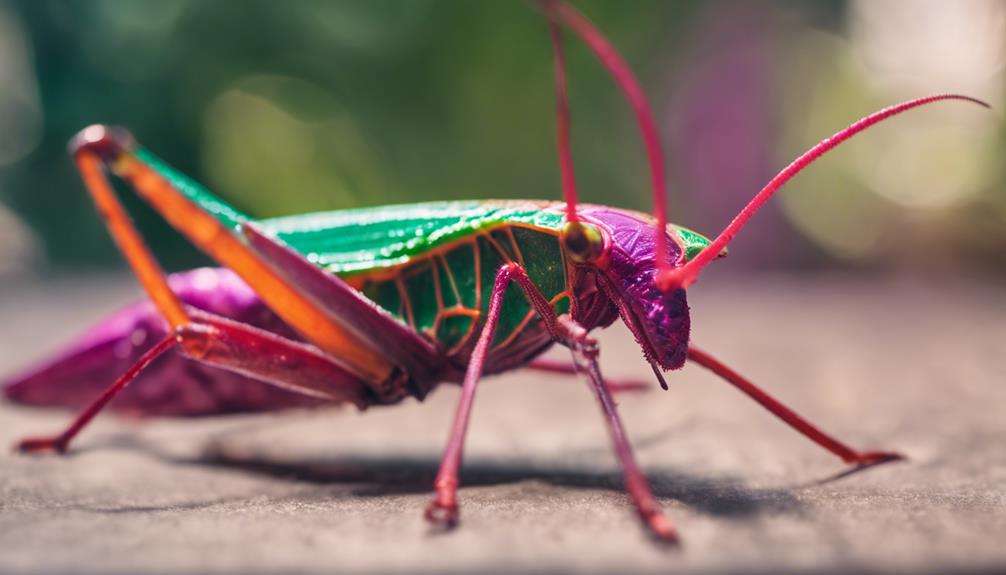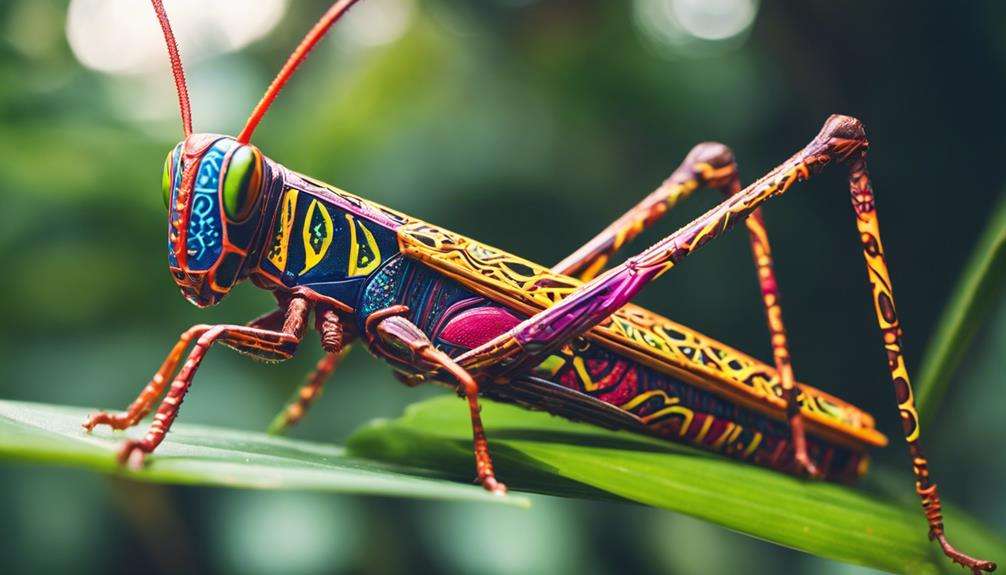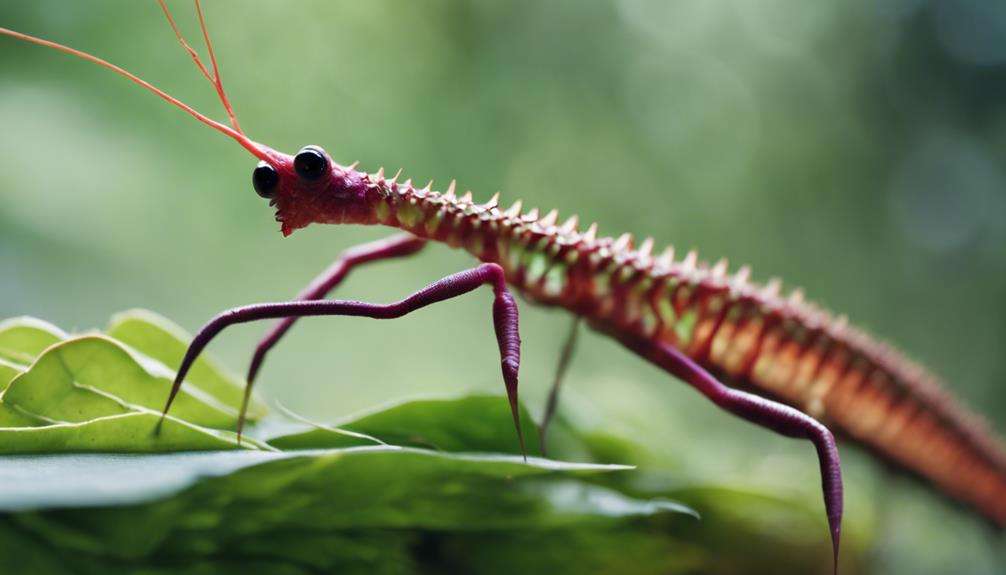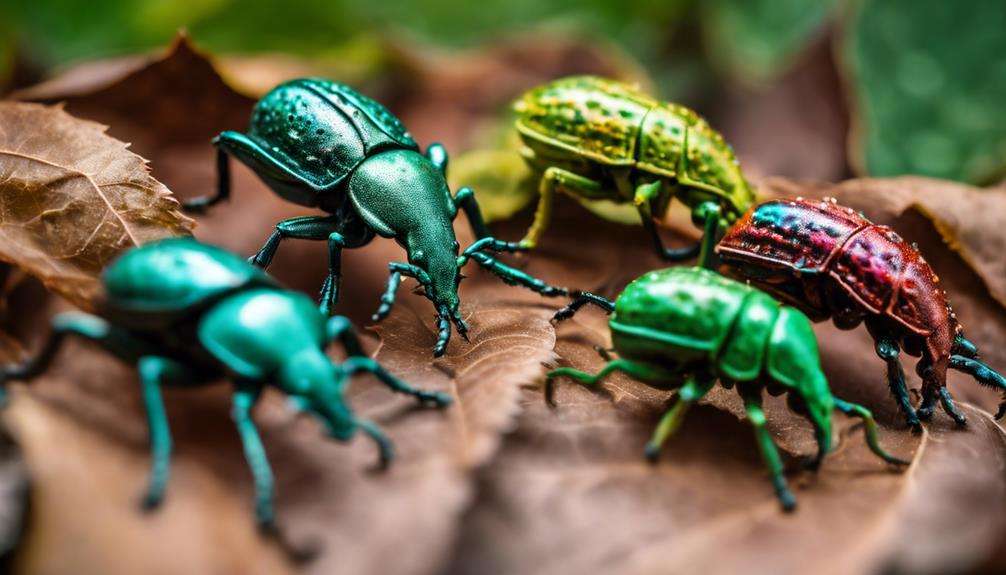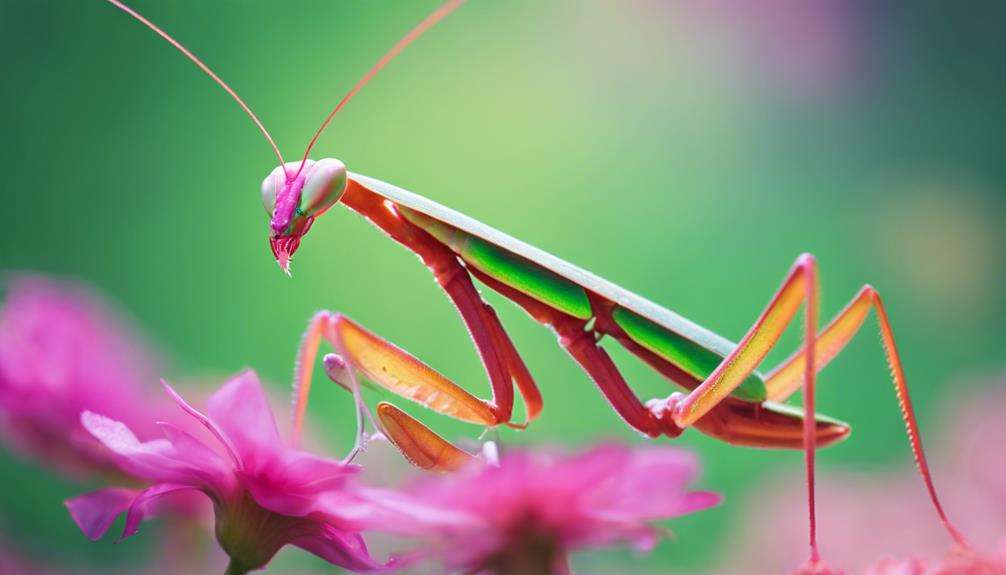When it comes to selecting invertebrates as pets, the world is your oyster. Imagine the thrill of caring for creatures that defy conventional pet norms. From the industrious ants to the enigmatic scorpions, each invertebrate holds a mysterious allure that can pique your curiosity and offer a unique perspective on the wonders of the animal kingdom.
But why stop there? The realm of invertebrate pets is vast and varied, promising surprises at every turn.
Key Takeaways
- Ants and tarantulas offer unique pet options with diverse care requirements.
- Understanding specific needs ensures the well-being of unique tarantula species.
- Vibrant colors in invertebrates serve as both beauty and defense mechanisms.
- Mimicking invertebrates like stick insects provide insights into nature's evolutionary wonders.
Unique Ant Species
Unique ant species exhibit fascinating adaptations and behaviors that set them apart from other insects in the ecosystem. Among these unique ants are the trap-jaw ant, known for its lightning-fast mandibles that can snap shut on prey or fling themselves into the air for escape. The bullet ant, named for its potent sting that delivers one of the most painful insect bites, serves as a powerful defense mechanism against predators. These ants, found in South America, aren't to be trifled with due to their venomous sting.
On the other hand, leafcutter ants display remarkable farming behaviors by cultivating fungus gardens for sustenance. These ants meticulously harvest leaves to fertilize their fungal crops, showcasing a sophisticated level of agriculture within their colonies. Their cooperative social structure and division of labor are key to the success of their farming endeavors, making them a marvel to observe in the wild.
Exotic Tarantulas
Exotic tarantulas present a fascinating array of species with unique characteristics. These arachnids require specific care to thrive in captivity, including maintaining appropriate temperature and humidity levels.
Understanding the diverse tarantula species available can help you choose the perfect companion for your exotic pet collection.
Tarantula Care Tips
When caring for tarantulas, ensuring specific temperature and humidity levels in their enclosure is crucial for their well-being. Here are some essential care tips for keeping exotic tarantulas:
- Maintain the temperature between 70-85°F to mimic their natural habitat.
- Keep the humidity levels between 70-80% to prevent dehydration.
- Provide a well-ventilated enclosure to prevent mold growth and ensure proper airflow.
- Feed your tarantula a diet of live insects like crickets or mealworms to meet their nutritional requirements.
Following these care tips will help create a suitable environment for your exotic tarantula, promoting their health and overall well-being. Remember to handle them with care and monitor their health regularly.
Unique Tarantula Species
Among the diverse array of tarantula species, a notable group showcases distinct colors, patterns, sizes, and behaviors, captivating enthusiasts with their unique characteristics.
These exotic tarantulas offer a fascinating glimpse into the world of arachnids, with species like the Greenbottle Blue Tarantula (Chromatopelma cyaneopubescens) displaying vibrant blue and orange hues.
The Goliath Birdeater Tarantula (Theraphosa blondi) holds the title for the largest tarantula, with leg spans reaching up to a foot.
Some species, such as the Pink Toe Tarantula (Avicularia avicularia), exhibit arboreal habits, requiring vertical enclosures with ample climbing space.
Understanding the specific care needs and habitats of these unique tarantulas is essential for their well-being in captivity, adding to the allure of keeping these exotic creatures as pets.
Colorful Millipedes
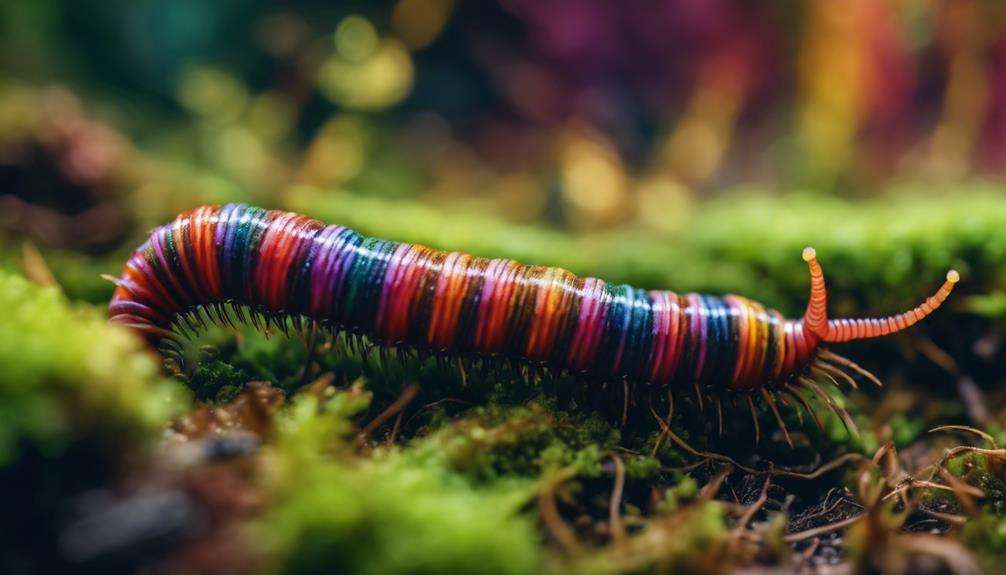
Colorful millipedes, with their vibrant hues like red, orange, and yellow, captivate attention with their striking patterns and markings. These invertebrates aren't only visually appealing but also possess fascinating characteristics. Here are some key points to consider:
- Vibrant Colors: Millipedes exhibit a wide range of colors, from bright reds to vivid yellows, making them stand out in the pet world.
- Striking Patterns: Some species of millipedes display intricate patterns and markings on their bodies, adding to their allure.
- Defense Mechanism: When threatened, millipedes can secrete toxins as a defense mechanism against predators, showcasing their ability to protect themselves.
- Warning Signals: The vibrant hues of millipedes not only attract attention but also serve as a warning to potential threats in nature, indicating their toxicity.
The diverse coloration of millipedes not only adds visual interest to their appearance but also highlights their fascinating adaptation strategies. Consider these factors when contemplating these colorful invertebrates as pets.
Mimicking Stick Insects
Mimicking stick insects, known for their remarkable camouflage abilities mimicking sticks, twigs, or leaves, are captivating invertebrates that offer unique observational opportunities. These invertebrate pets rely on their camouflage to evade predators, making them intriguing additions to your collection. Their fragile nature requires gentle handling to prevent any harm. Mimicking stick insects provide an educational experience, especially for children, as they offer insights into evolution and the fascinating world of camouflage in nature.
Observing these creatures up close can be a rewarding endeavor, as they showcase their intricate adaptation to their environment. By watching a mimicking stick insect remain motionless on your hand, you can appreciate the level of detail in their appearance that aids in their survival. Their ability to blend seamlessly with their surroundings serves as a perfect example of nature's ingenuity. Keeping mimicking stick insects as pets can't only be a visually stunning experience but also a valuable educational tool for understanding the complexities of the natural world.
Alien-Like Mantids
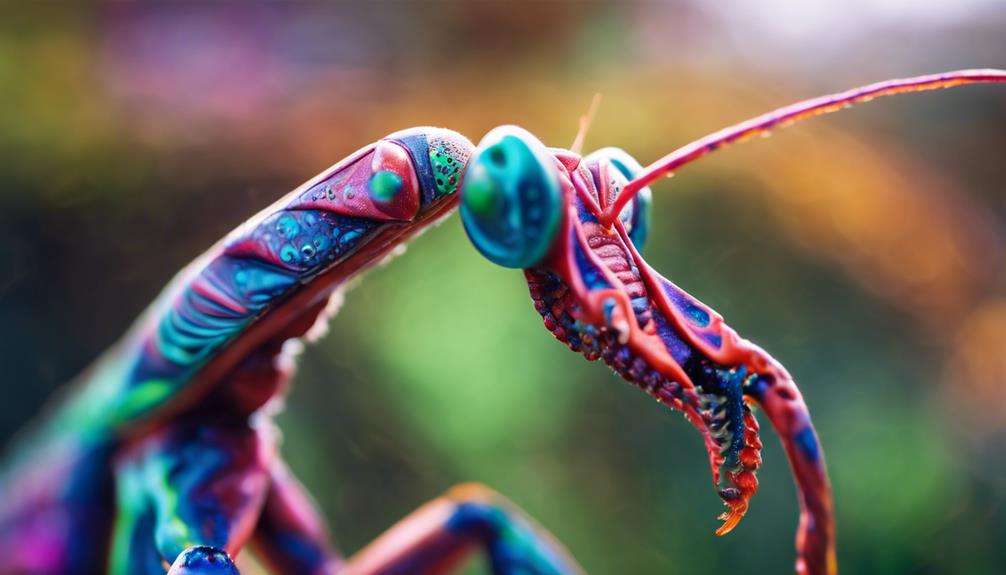
Alien-like mantids, with their exotic appearance and graceful demeanor, are intriguing insects that captivate enthusiasts with their unique characteristics and behaviors. If you're considering keeping a praying mantis as a pet, here are some essential facts to know:
- Unique Appearance: Praying mantids have elongated bodies, triangular heads, and powerful forelegs used for catching prey.
- Specialized Habitat: These insects require a warm environment with high humidity levels to thrive successfully in captivity.
- Feeding Requirements: Maintaining a steady supply of live insects like crickets and flies is crucial for the mantis's health and well-being.
- Behavioral Considerations: It's vital to house mantids individually as they may display cannibalistic tendencies towards each other.
Observing these mesmerizing creatures in captivity can be a rewarding experience due to their intriguing hunting techniques and agile movements. Remember to provide a suitable environment and a consistent diet to ensure a fulfilling life for your alien-like mantid companion.
Unconventional Cockroaches
With their unique characteristics and low-maintenance nature, Madagascar hissing cockroaches are intriguing pets that offer a fascinating pet-owning experience. These hissing cockroaches are hardy and quiet creatures that can be gently handled, making them suitable for those looking for unconventional pets that are easy to care for. Measuring about two inches in length, hissing cockroaches aren't only visually striking but also known for the distinctive hissing sound they produce, adding to their allure as pets.
Despite the common aversion to cockroaches, these hissing varieties are easy to handle with care and are unlikely to bite, making them a great choice for beginners in the world of unconventional pets. Their robust nature allows owners to confidently interact with them, providing a unique perspective on pet ownership. Hissing cockroaches have gained popularity due to their ease of care, making them one of the most low-maintenance pet options available.
Enigmatic Scorpions
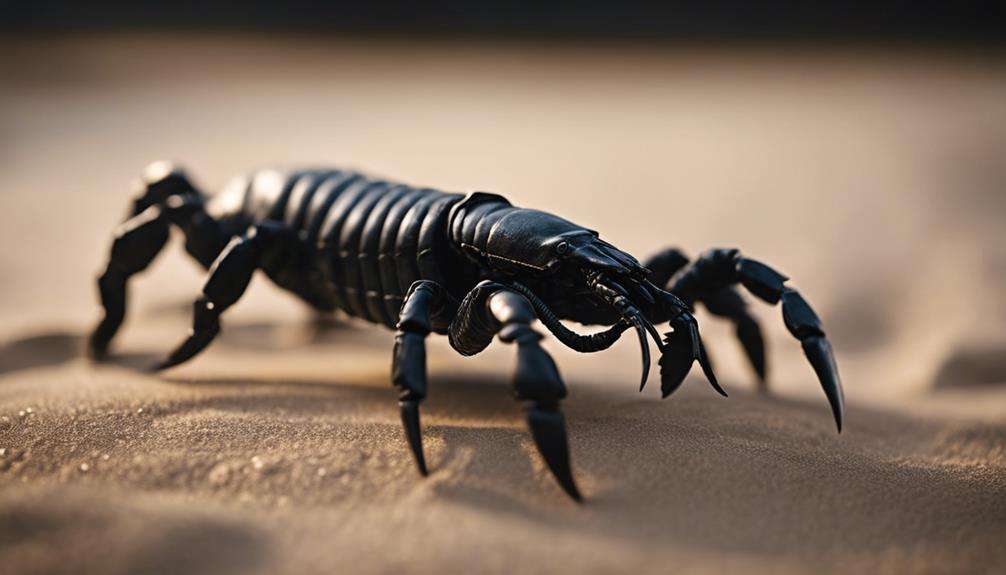
Scorpions possess unique adaptations that make them intriguing pets, such as their eight legs, pincers, and venomous stingers.
Understanding their specific habitat requirements is crucial for creating an environment where they can thrive in captivity.
When considering scorpions as pets, it's essential to follow proper handling tips to ensure both your safety and the well-being of these enigmatic creatures.
Scorpions' Unique Adaptations
Exhibiting remarkable adaptations, scorpions possess venomous stingers and sensory hairs on their legs. They use their pincers to catch prey and their venom to subdue it. Scorpions can survive in harsh environments and go without food for extended periods.
Some scorpions fluoresce under ultraviolet light, a trait used in scientific research. Their ability to detect vibrations in the ground helps them locate prey and avoid predators. The combination of these features makes scorpions fascinating creatures with unique survival strategies.
If you ever observe a scorpion up close, you'll be amazed by the intricate adaptations that have allowed them to thrive in diverse habitats.
Scorpion Habitat Requirements
Enigmatic scorpions, like other fascinating invertebrates, have specific habitat requirements essential for their well-being in captivity. When setting up a scorpion enclosure, it's crucial to provide a dry environment with hiding spots such as logs or rocks to replicate their natural habitat.
The substrate should consist of a mixture of sand and soil, allowing for burrowing and moisture retention. Maintaining a temperature range of 75-85°F (24-29°C) is vital for the scorpion's health, achieved through a heat source like an under-tank heater.
Additionally, a shallow water dish should be included for drinking and humidity regulation. To ensure the well-being of pet scorpions, create a dark and quiet environment as these creatures are nocturnal and thrive in such conditions.
Scorpion Handling Tips
When handling scorpions, employing specialized tools like soft paintbrushes or forceps is crucial to minimize the risk of stings. It's essential to avoid handling scorpions with bare hands to prevent accidental stings. Scorpions possess venom that can cause pain and discomfort, so use caution when interacting with them.
Always supervise children if they're handling scorpions to ensure their safety. Additionally, educating yourself on the specific species of scorpion you have is important to understand their behavior and venom potency. Remember, safety is paramount when handling these fascinating invertebrates, so take the necessary precautions to enjoy their company responsibly.
Beware: Venomous Invertebrates
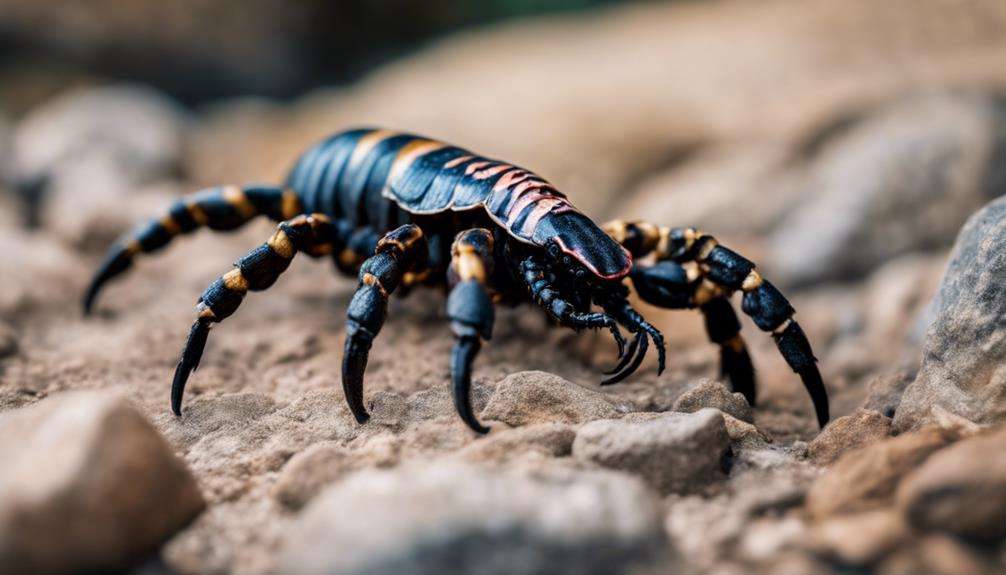
Venomous invertebrates, such as scorpions and specific tarantula species, pose potential risks due to the harmful effects of their venom on humans. The venom potency of these creatures can vary significantly, with some species capable of inducing severe reactions. Scorpions, for example, have venom that can lead to anaphylactic responses in sensitive individuals, highlighting the importance of understanding the potential dangers associated with these animals.
When considering keeping venomous invertebrates as pets, it's crucial to exercise caution during interactions to prevent stings or bites. Owners must be knowledgeable about the specific venom potency and effects of each species they keep to ensure the safety of both themselves and others. While these creatures can be intriguing pets, responsible ownership involves being well-informed about the potential risks and taking appropriate measures to minimize them.
Intriguing Antlions
Have you ever wondered about the fascinating behaviors of antlions, the ground-dwelling insects known for their unique hunting techniques? These intriguing creatures exhibit remarkable characteristics that make them stand out among invertebrates:
- Antlions are ground-dwelling insects that construct cone-shaped sand pits to trap ants for food.
- They transition into winged insects after the larval stage, living for a short period in this adult form.
- Antlions exhibit interesting hunting techniques by burying themselves in sand and ambushing prey.
- The larval stage of antlions, also known as doodlebugs, can last for two to three years.
Antlions, though not suitable for handling, can be a captivating addition to your observation list. While they may not be cuddly pets, witnessing their hunting strategies and life cycle in their natural habitat or through specially designed kits can provide a fascinating insight into the world of these ground-dwelling insects.
Charming Snails
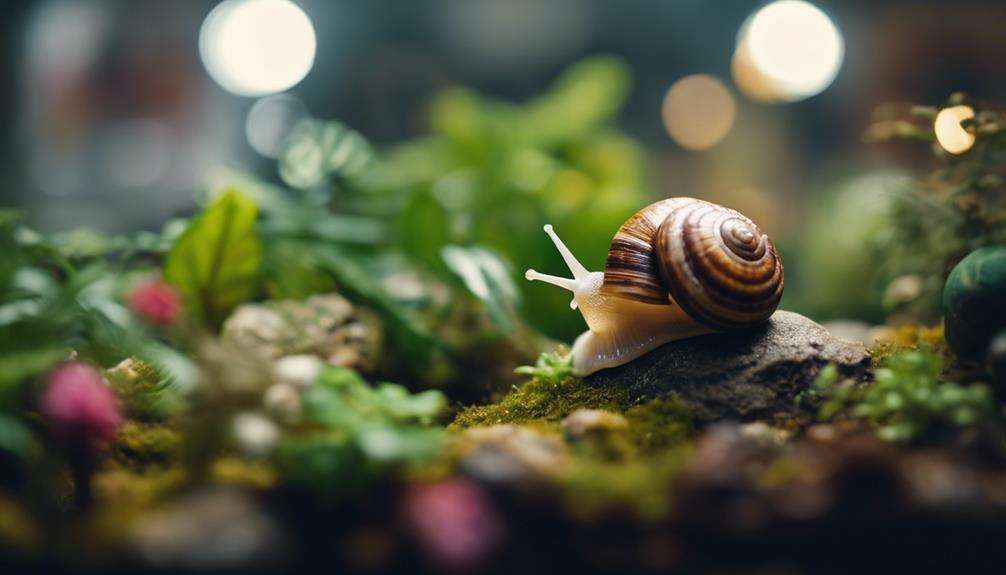
Charming in their own right, snails are popular choices for invertebrate pets due to their quiet and gentle nature, making them fascinating creatures to observe.
Among the various types of snails, the Giant African land snails stand out as particularly intriguing pets. These snails are easy to care for, requiring a terrarium with substrate for burrowing, a shallow dish of water for hydration, and a diet of fruits and vegetables.
Their large size and distinctive appearance make them captivating to watch as they move slowly and gracefully. As invertebrate pets, snails provide a unique opportunity for observation and interaction, especially for children. It's essential to handle them gently and avoid lifting them by their shells to prevent injury.
With shells ranging from 10 to 15 cm in length, these molluscs come in various sizes, adding to the charm of keeping them as pets.
Frequently Asked Questions
What Is the Best Pet Invertebrates?
When considering the best pet invertebrates, you should explore unique species that match your interests. Benefits include learning about evolution and fostering responsibility. Remember, proper care is crucial, especially for beginners.
What Is the Easiest Invertebrate to Take Care Of?
For beginner-friendly invertebrates, consider stick insects. They are low maintenance, easy to care for, and simple to handle. Observing their behavior can offer unique insights. Stick insects make fascinating and effortless pets for those new to invertebrate keeping.
Can Invertebrates Be Domesticated?
Invertebrates cannot be fully domesticated due to their innate wild instincts and behaviors. Their adaptation to natural habitats hinders complete adjustment to a domestic setting. Providing suitable environments resembling their habitats is crucial for their well-being.
What Is the Best Bug to Keep as a Pet?
For the best bug pet, tarantulas stand out with their unique behaviors, interactive feeding, need for customized habitats, and educational benefits. Their vibrant colors and fascinating movements make them captivating companions for observation and study.
Conclusion
Now that you have explored the diverse world of invertebrate pets, consider delving deeper into the fascinating behaviors and characteristics of these creatures.
By observing and interacting with these unique animals, you can gain a deeper understanding of the natural world and appreciate the intricacies of their biology.
Dive into the world of invertebrates and unlock the secrets they hold, leading to a greater appreciation for the wonders of the animal kingdom.
